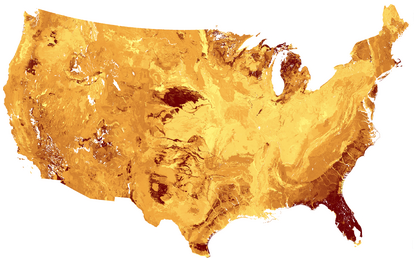The texture of the soil that microbes live in determines how much carbon they release after deforestation, with sandy soils sending the most carbon into the atmosphere, according to research led by Yale scientists.
 Subterranean microbes regulate carbon emissions from soil, and drastic changes to the microbial community, such as those that follow deforestation, can allow more CO2 to escape into the atmosphere and exacerbate global warming. The texture of soil, rather than such factors as temperature or nutrient concentrations, was the most important factor governing the release of CO2, the researchers found. Muddy, clay-like soils provide the most stable environment for microbial communities, likely because they’re better at retaining nutrients than loose, sandy soils. The team used the findings to map areas in the U.S. where soil microbial communities would be most and least affected by deforestation, which could help inform land management practices.
Subterranean microbes regulate carbon emissions from soil, and drastic changes to the microbial community, such as those that follow deforestation, can allow more CO2 to escape into the atmosphere and exacerbate global warming. The texture of soil, rather than such factors as temperature or nutrient concentrations, was the most important factor governing the release of CO2, the researchers found. Muddy, clay-like soils provide the most stable environment for microbial communities, likely because they’re better at retaining nutrients than loose, sandy soils. The team used the findings to map areas in the U.S. where soil microbial communities would be most and least affected by deforestation, which could help inform land management practices.

Soils most affected by forest loss in red; least in yellow.